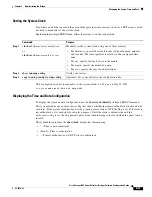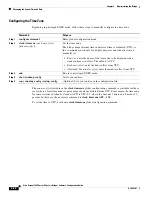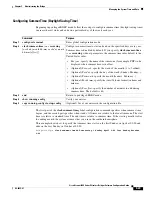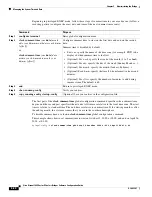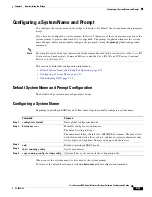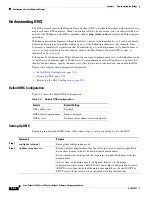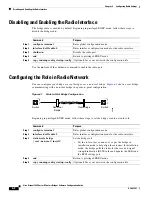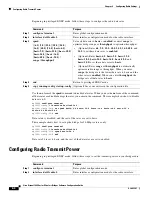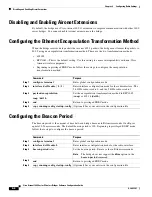
5-31
Cisco Aironet 1400 Series Wireless Bridges Software Configuration Guide
OL-4059-01
Chapter 5 Administering the Bridge
Configuring a System Name and Prompt
Configuring a System Name and Prompt
You configure the system name on the bridge to identify it. By default, the system name and prompt are
bridge
.
If you have not configured a system prompt, the first 20 characters of the system name are used as the
system prompt. A greater-than symbol (>) is appended. The prompt is updated whenever the system
name changes, unless you manually configure the prompt by using the
prompt
global configuration
command.
Note
For complete syntax and usage information for the commands used in this section, refer to the
Cisco IOS
Configuration Fundamentals Command Reference
and the
Cisco IOS IP and IP Routing Command
Reference for Release 12.1
.
This section contains this configuration information:
•
Default System Name and Prompt Configuration, page 5-31
•
Configuring a System Name, page 5-31
•
Understanding DNS, page 5-32
Default System Name and Prompt Configuration
The default bridge system name and prompt is
bridge
.
Configuring a System Name
Beginning in privileged EXEC mode, follow these steps to manually configure a system name:
When you set the system name, it is also used as the system prompt.
To return to the default host name, use the
no hostname
global configuration command.
Command
Purpose
Step 1
configure terminal
Enter global configuration mode.
Step 2
hostname
name
Manually configure a system name.
The default setting is
bridge
.
The name must follow the rules for ARPANET host names. They must start
with a letter, end with a letter or digit, and have as interior characters only
letters, digits, and hyphens. Names can be up to 63 characters.
Step 3
end
Return to privileged EXEC mode.
Step 4
show running-config
Verify your entries.
Step 5
copy running-config startup-config
(Optional) Save your entries in the configuration file.











